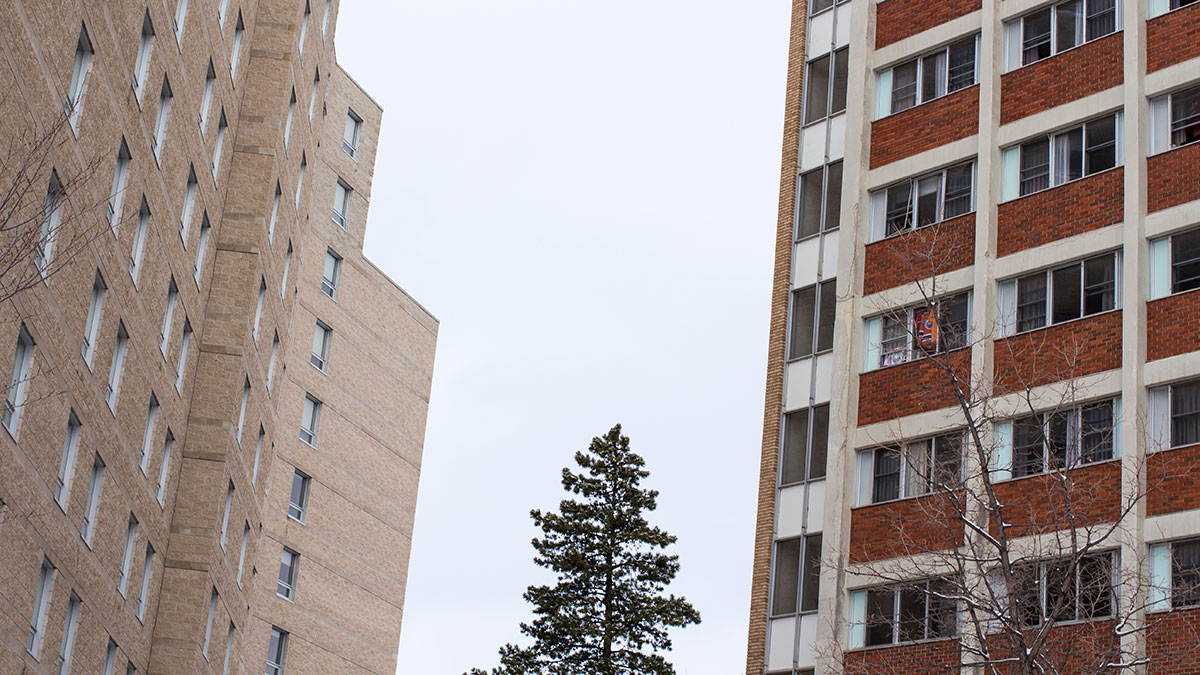 Christina Varvis
Christina VarvisKyle Monda is both a past employee of Residence Services as an RA, and a student who has lived in residence for several years.
A single survey with a dismal 9 per cent response rate is not enough for a task force given a year to study the residence experience at the U of A.
The Residence Life Task Force was formed by the Provost in April of 2016, in response to “both positive and negative” feedback from students over the way the University of Alberta administrates residences. Its mandate was to “conduct a comprehensive examination, in close collaboration with our student leaders, of the residence experience at the U of A and develop a plan to optimize it moving forward.”
The final report, released in March, includes a semblance of a plan, but it is far from a comprehensive overview of the residence life experience. The only research conducted by the group was the “Residence Experience Survey,” an online survey sent to anyone who has lived or worked in residence for the past five years. The response rate was low at 9 per cent, with 1,621 individual responses. That is approximately the residence capacity of Lister Centre, or two HUBs.
The task force did not conduct any interviews or allow individuals to send in written submissions outside of the short-form survey questions. This limited responses students and employees could submit to those prompted by the survey, rather than specific issues that they cared the most about. The online survey should have been a starting point for understanding the residence life experience, not the only research undertaken. No existing data sources, such as the annual Residence Satisfaction Survey, which is sent to all residents every March, were used. The task force could have easily conducted a more thorough inquiry, especially of residence employees, by holding investigative meetings or interviews.
The limited findings of the task force are a start, but do not address many of the most controversial residence issues that have erupted since 2014. The conflict over the suspension of the Lister Hall Students Association, which arguably marked the start of the most recent era of student unrest in residence, is not even mentioned. The rapidly rising cost of rent and the meal plan were also left unaddressed. Residence student staff unionized over the past year, but this major change was also ignored by the task force. At times, the recommendations of the task force failed to address the issues identified in the findings. Despite over 50 per cent of employees responding that consultation on changes in residence require improvement, no front-line employees were given a seat on the Residence Oversight Committee proposed to implement the recommendations of the task force.
All of the recommendations, if completed, will bring welcome and long overdue changes to residence, especially relating to maintenance and internet services. However, the task force missed a major opportunity to engage students, to truly understand what makes residence life at the U of A great, and to honestly discuss what needs to be improved. The final report indicates a minimal effort was made to learn the problems facing the residence system as whole, or the unique challenges presented in each residence community.
A truly ambitious task force would have taken the time to understand the perspectives of students, student representatives, and employees. Difficult questions surrounding complex issues like rent should have been answered instead of ignored. University administration and student representatives could have done much better than the shallow report delivered.




